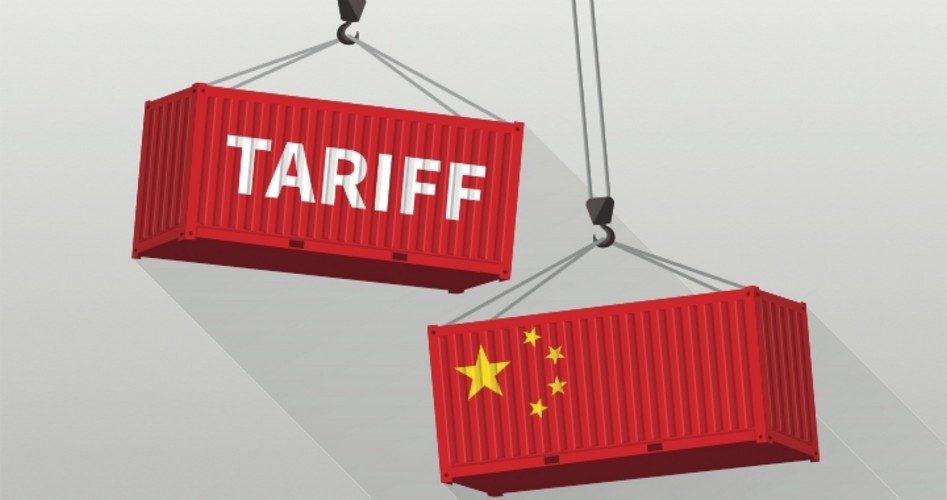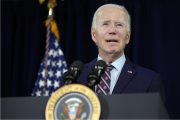
The latest data from China — both “official” (government) and unofficial (more reliable) — are confirming that the world’s second-largest economy is slowing, thanks in part to the first two rounds of tariffs President Trump has applied to the communist country.
It was already slowing because of increasing concern by China’s central bank about the country’s national debt. It is reported to be nearly three times the country’s total national output of goods and services, and the central bank has been taking measures to keep it from getting totally out of hand by raising capital requirements and short-term interest rates.
Two previous attempts to negotiate over President Trump’s biggest concerns — China’s theft of intellectual property, its subsidizing of critical industries in order to weaken American manufacturers of steel and aluminum, and its blackmailing of American companies into revealing their secret technologies in order to do business there — have gone nowhere. And when Trump applied tariffs last Monday to another $200 billion of Chinese goods entering the United States, a third meeting was canceled by Chinese officials.
Instead, the Chinese are taking a different tack: attempting to influence voters in key U.S. states to bring pressure to bear on the White House to back off. The New American reported last Wednesday on one of those blatant attempts to influence national policy: to propagandize Iowa soybean and sorghum producers by inserting a piece into the compliant Des Moines Register’s Sunday paper last week. The New American reported that, despite the piece looking like a regular news item, Iowans were wary of the attempt by the communist Chinese paper ChinaWatch to manipulate them in the tariff wars.
President Trump is, according to one top Chinese official, “in the driver’s seat” and the communist government running the country knows it. China exports more than $500 billion of goods to the United States every year while it imports just $130 billion from the United States. Simply put, Trump has a gun that’s four times larger than China’s in the tariff war.
So far he has delayed in firing all of his bullets. In fact the last round of tariffs starts at just 10 percent, giving the Chinese every opportunity to come to the table before the end of the year when they are scheduled to jump to 25 percent. And he has made the Chinese aware that he still has the option of putting tariffs on the remaining $250 billion-plus of Chinese goods entering the United States.
But those tariffs that are in place are already beginning to bite. Weakening foreign demand for Chinese goods, along with softening domestic demand thanks to the country’s central bank’s efforts to rein in its horrendous national debt, have shown up in both “official” and unofficial reports: For example, privately owned makers of cars and machinery stopped expanding in September, reflecting a drop in export demand that’s the lowest in more than two years. There is similar weakness being reported by state-owned manufacturing enterprises as well.
This is now being reflected in various economic indexes that attempt to track the performance of China’s economy, such as the Caixin China manufacturing purchasing managers’ index, which fell once again in September following a decline the month before. The data from Caixin “show that Chinese factories produced far fewer goods to foreign markets last month,” wrote the Wall Street Journal, and “new export orders slipped to the lowest point since February 2016.” Its key export index — an indicator of external demand for Chinese goods — dropped significantly in September from August.
The slowing of the Chinese economy was summarized by Rajiv Biswas, a chief economist at HIS Markit in Singapore: “The further slowdown in China’s official manufacturing PMI [Purchasing Managers’ Index] in September reflects the intensifying impact of the U.S.-China trade war on China’s manufacturing export sector. The near-term outlook for the Chinese manufacturing export sector remains weak.”
Additional data from Bloomberg Economics showed that business sentiment in China deteriorated in September following a slowdown in industrial profit growth. The official PMI report also indicates rising unemployment in that sector.
Contrast that with what’s happening on both Wall Street and Main Street in the United States where records are being set on almost a daily basis. As the American economy gets stronger (despite China’s nearly imperceptible retaliatory tariffs on American exports into the country), China’s is getting weaker.
All of which means that the time has never been better for the negotiator-in-chief to seize the day and make clear to his Chinese counterpart his non-negotiable demands. As Robert Carnell, chief Asia-Pacific economist at investment banking firm ING, put it: “This is probably the best time for the U.S. to go back to the table … [this time] with a ‘take it or leave it’ type of trade demand.”
Photo: OrnRin/iStock/Getty Images Plus
An Ivy League graduate and former investment advisor, Bob is a regular contributor to The New American magazine and blogs frequently at LightFromTheRight.com, primarily on economics and politics. He can be reached at [email protected].
Related articles:
Trump Puts Tariffs on Another $200B of Chinese Imports; China Retaliates
Trump Seeks Third Round of Trade Talks With China, Sensing Their Vulnerability
Chinese Communist Propaganda Piece in Iowa Paper Could Backfire



